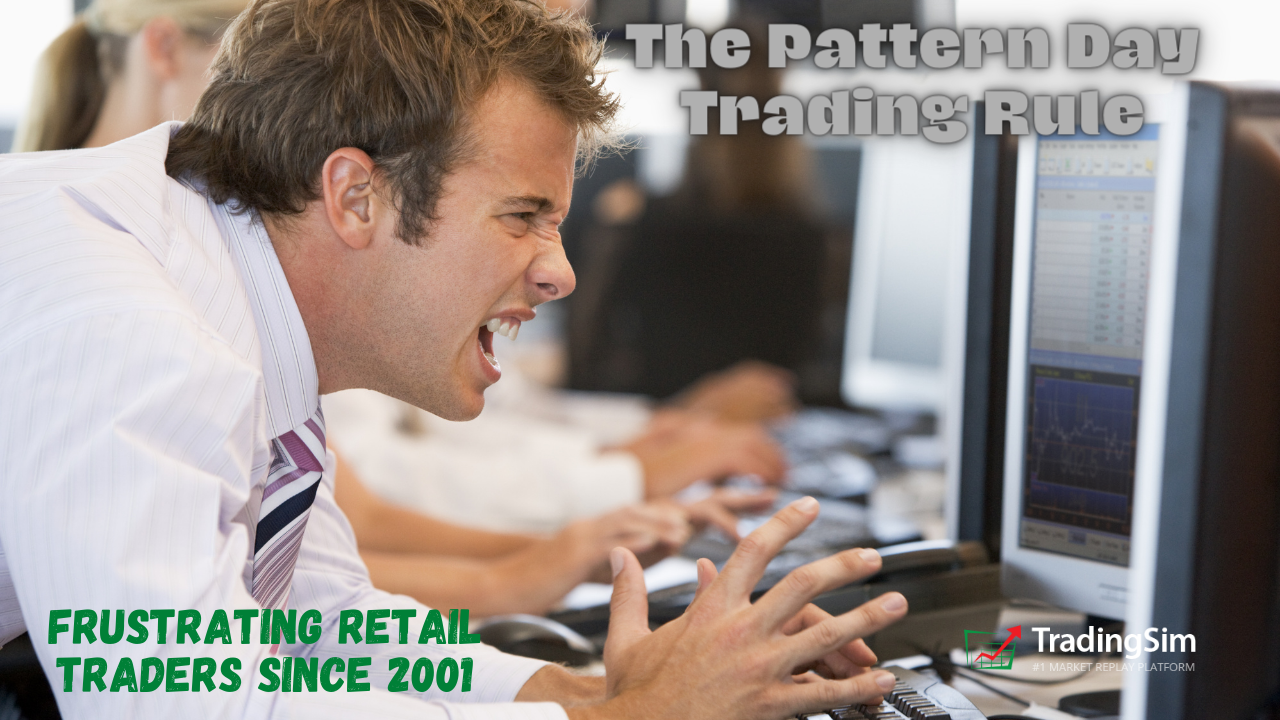
Podcasts are an ever-growing segment of media. In the current landscape of false information and media bias, there is really no way to tell truth from fiction. However, podcasts offer a refreshing and easily accessible approach to information distribution. Day trading podcasts are no exception, and in this post we cover the 6 best day trading podcasts worth following.
Why Day Trading Podcasts Are Important to Your Education
As we’ve said before, day trading education can be a bit like the wild west. Any Joe Blow can jump on YouTube and start advertising his/her services. And while not all of the gurus you see online are fake, you never know when you’re first getting started.
Day trading podcasts are a way to introduce you to the real traders in the community. Whether you trade forex, futures, or stocks, the podcasts we mention below can offer you a genuine look at different traders and trading styles.
Therein lies the benefit of podcasts in trading. Gone are the days of not knowing about this guru or that guru before you sign up. You can literally watch an interview on just about any of them, nowadays.
In addition, you now have a wealth of education at your finger tips, for free. While we advocate for quality education services, nothing beats a free education.
How to Get the Most out of Day Trading Podcasts

There are a few things to pay attention to when listening to a trading podcast.
- Trading psychology nuggets
- Anecdotes about trading
- Trading styles and technical analysis
- The importance of risk management
While these are just a handful of things to watch out for, the ultimate goal of these shows is to inform you. As developing traders, you need to be reminded of what works, and what doesn’t.
Along those lines, hearing from successful traders about how they overcame adversity in order to find consistency is like finding gold. Not only does it provide you with a “virtual” form of mentorship, but it gives you access to the most successful day traders’ minds, for free.
And on that token, and in no particular order, let’s jump right into the 6 Best Day Trading Podcasts available right now. Keep in mind, each has its own strengths and style.
The 6 Best Day Trading Podcasts
1. The SimCast day trading podcast with John McDowell

· Podcast Name: The SimCast
· Host: John McDowell & Sam Pryor
· Podcast Type: Interview, Trade Recap
· Link: https://tradingsim.com/blog/category/the-simcast/
· Frequency: Weekly
· Where to listen: YouTube, Website
We might be a little biased, but our very own SimCast is a great way to discover successful traders, their strategies, and stories. John tries to pull as much out of each guest as possible, and loves diving into charts. Not only that, but he has a knack for finding “unknown” traders who are consistently profitable.
While some podcasts focus on the story or the anecdotes, John believes in the process of discovering setups on the chart. As much as possible, he likes to know the purpose behind the trade — the thesis, if you will. In addition, he likes to know entry criteria, probabilities for success, systematic or discretionary approaches, and mindset.
Altogether, the SimCast is a top day trading podcast and a great way for new and experienced day traders to learn something new. The approach is refreshing and unbiased. John isn’t afraid to bring controversial traders on the show, just to share opposing viewpoints.
Definitely worth subscribing to, we highly recommend the SimCast.
2. Confessions of a Market Maker trading podcast with JJ and Ray

· Podcast Name: Confessions of a Market Maker
· Host: All day Ray and J.J.
· Podcast Type: Talk show/Interview/Reviews
· Link: https://www.youtube.com/channel/UCAkEaTZXiMMXKrYqwM6dZ5A
· Frequency: Weekly
· Where to listen: iTunes, YouTube
Ray and J.J. are fun and entertaining. J.J. is a market maker with over 20 years of experience and goes by @vwaptrader1 on Twitter. You can find J.J. at @AllxDayxRayx. Together, they provide a really unique dynamic with really high profile guests.
Some of the more popular guests they have had on the show range from Mark Cuban to Anthony Scaramucci. Topics can range from the blockchain to trading psychology. He’s had NFL coaches on the show, the youngest female floor trader in NYSE history, and a Market Wizard.
Whatever your taste in trading, you’re bound to find a lot of value in the content. J.J. provides a lot of great insight into the “behind the scenes” thought process of trading, while Ray keeps the convo fun and engaging.
Be sure to give them a follow and subscribe to the YouTube channel.
3. BtheStory day trading podcast with Alex Bustos

· Podcast Name: BtheStory
· Host: Alex Bustos
· Podcast Type: Talk show/Interview/Reviews
· Link: https://bthestory.net/
· Frequency: Weekly
· Where to listen: iTunes, Spotify, Google Play, Stitcher, YouTube, Website
Alex has put together a very energetic and unique approach to day trading podcasts. Starting out, his virtual interviews included many big name day traders like Tim Grittani, Nate Michaud, and others.
Recently, Alex has transitioned to more in-person interviews. Often found visiting the homes of day traders, or prop firms, he has a knack for finding good traders.
Alex’s fun personality and energy, coupled with his ability to ask great questions, leads to really great interviews. He understands the struggles that newer traders face. Along those lines, he draws from his own experience to create valuable content for his viewers.
At the end of the day, it is clear that Alex is passionate not only about his show and his trading, but also about the trading community. Most of his content is on the shorter side, but it’s very engaging and with a lot of great nuggets.
We highly recommend it.
4. SMB Capital YouTube Channel

· Podcast Name: SMB Capital
· Host: Mike Bellafiore
· Podcast Type: Interviews/Recaps
· Link: https://www.youtube.com/user/smbcapital
· Frequency: Weekly
· Where to listen: YouTube, Website
SMB Capital is proprietary trading firm. One of the founders, Mike Bellafiore, is well-known for his books and educational material. As part of his firm, he advocates for education. They actually have an arm of the company called SMB U that is dedicated to retail trader education.
Mike and his team of traders regularly put out relevant content regarding the state of the markets, what is working, and what’s not. It isn’t exactly a day trading podcast, but many of his younger traders share personal videos and stories of their successes and failures. You might also find tutorials on topics like tape reading.
While it may not be as good as sitting at a desk inside SMB Capital, their channel is a great resource for budding traders. If you can’t afford the courses they teach, its a great way to get your feet wet and discover new tips and tricks for your trading.
5. Chat with Traders podcast by Aaron Fifield

· Podcast Name: Chat with Traders
· Host: Andrew Aaron Fifield
· Podcast Type: Talk show/Interview
· Link: https://chatwithtraders.com/podcast/
· Frequency: Monthly
· Where to listen: iTunes, YouTube, Android, Website
Chat with Traders is a day trading podcast that stays true to its name. It features a weekly/monthly show with traders, mostly day traders but with some swing traders and investors.
Some of the most famous names in all of trading have appeared on Chat with Traders. This list includes Jack Schwager and Linda Raschke among other big names.
Aaron Fifield started the show around 2015. Since then, he has done over 200 interviews. In addition to his interviews, some of his more popular episodes are compilations. We particularly enjoy his “Best of Trading Psychology” compilations.
While Aaron’s conversational style is casual, he has a great way of getting his guests to go deep. Listeners will enjoy learning how other traders look at the markets, glimpses into what trading strategies they use, and how they’ve overcome adversity to reach success.
Unlike the SimCast or BtheStory, Aaron’s is more of an audio podcast, though he is trying to incorporate trade recaps as of late.
Chat with traders is not just “another day trading podcast,” but has been featured on big websites including Business Insider and Investopedia.
Definitely worth a subscription in our opinion.
6. TradingNut day trading podcast with Cam Hawkins

· Podcast Name: Trading Nut
· Host: Cam Hawkins
· Podcast Type: Talk show
· Link: https://tradingnut.com
· Frequency: Weekly
· Where to listen: iTunes, Android, Website, YouTube
TradingNut is a podcast for day traders of all asset classes, though it focuses heavily on forex.
If you prefer a more straightforward approach to trading, Cam’s show is worth a watch. The show regularly covers how other traders feel about the markets, their trading systems and strategies, and unique ways to exploit markets.
The podcast is hosted by Cam Hawkins. This weekly podcast talks about all things to do with trading, including dedicating a decent amount of air time towards trading psychology.
Cam regularly hosts professional forex traders, crypto traders, psychologists, and more. His topics can be as obscure as moon phases, or as typical as Fibonacci indicators and head and shoulders patterns.
Whatever style of trader you are, TradingNut always puts out relevant content for free.
7. Better System Trader day trading podcast with Andrew Swanscott

· Podcast Name: Better System Trader
· Host: Andrew Swanscott
· Podcast Type: Interviews/Talk show
· Link: http://bettersystemtrader.com/category/podcast/
· Frequency: Weekly
· Where to listen: iTunes, Android, Soundcloud, Website
Better System Trader is a podcast and a blog that was put together by Andrew Swanscott. The content focuses heavily on systems traders or mechanical traders.
To that end, if you are looking for new trading strategy ideas or ways to improve your existing trading strategy, Better System Trader is the place to go! The podcast has received praise from different members within the trading circle.
Better System Trader is a free podcast that is not just limited to talking about trading strategies. The show also focuses on money management as well as tips and tricks from professional traders.
Although Better System Trader’s podcasts have to do with trading systems, it is not confined to just one market, therefore listeners can apply the strategy ideas to any markets of their choice.
You can listen either via iTunes store, Stitcher or Soundcloud, or simply visit the Better System Trader website. Andrew updates consistently and often shares tons of trading codes (for different trading platforms) and ideas to fine tune day trading systems.
8. The High Performance Podcast with Jake Humphrey and Damian Hughes

· Podcast Name: The High Performance Podcast
· Author: Jake Humphrey & Damian Hughes
· Podcast Type: Interviews/Talk show
· Link: The High Performance Podcast
· Frequency: Weekly
· Where to listen: iTunes, YouTube, Website
You might be thinking, “but what does this have to do with trading?” Well, that’s a fair question. We included this podcast because trading is a performance sport.
If you are going to perform at the top of your game, you need a keen awareness of the mindset it takes. Jake and Damian interview successful athletes, business people, artists, and more. They are constantly in pursuit of the qualities inherent with high performers.
With a background in organizational psychology, Damian is a professor and keenly aware of the best questions to ask. Jake is an anchor on BT’s Sports Premier League. So, he knows a thing or to about performance sports.
Together, they bring out some of the most inspirational content you can find on the web. It’s not over the top, either. It’s simply encouraging and motivational.
This one should definitely be a part of your regular listening routine.
Why should you listen to a day trading podcast?
The biggest benefit with podcasts (or for that matter with any audio type of content) is in the interviews. Every so often, a day trading podcast that has an interview with some traders or some experts in a certain field can give out tons of wisdom which might be missed otherwise.
Similarly, listening to a day trading podcast can be beneficial for those who are commuting to work and are seriously committed to learning how to improve their day trading.
However, there are also many video podcasts now and most of them are free. This allows you insights into technical analysis like never before.
Want more day trading podcasts?
You can visit https://player.fm/podcasts/Trading and browse through the various categories including day trading, forex, futures, economy, stock markets and many more.
































![6 Reliable Bullish Candlestick Patterns [+ Free Cheat Sheet]](https://app.tradingsim.com/wp-content/uploads/2021/06/image-61.png)














